Artificial grass What uses are you given and from which countries do you care?
Published on 20 May 2016
The import of synthetic grass is a boom for different disciplines. For many years synthetic grass wanted to earn a place in football. In recent years, thanks to technology and research on this type of surface and according to the analysis of Veritrade's information on this product, it has been doing so favorably in Peru. It has been a boom in the soccer fields, they are everywhere and many stadiums have chosen to have a high quality lawn and low maintenance costs. In the last 05 years, about 5,651,023.81 million square meters of artificial grass have been imported, which could have implemented 1,130 professional soccer fields with all that imported grass.
In addition, synthetic grass is used in various disciplines, although not in all with the same success or with the same frequency, because, thanks to its resistance, and no use of water for its use it becomes the best alternative to natural grass
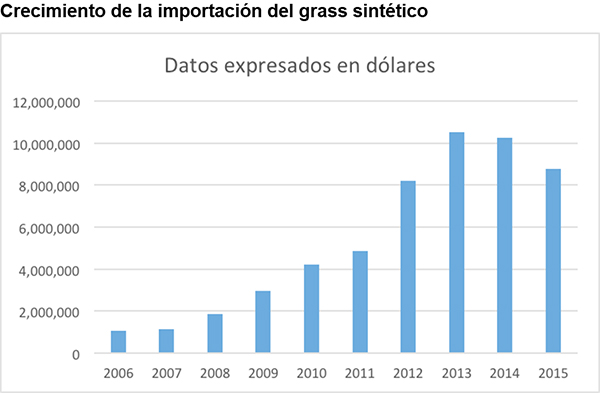
The synthetic and decorative synthetic grass has had a rapid growth of the market in the last 7 years, whose amount grew by $ 9,439,344.09; however, in the last 2 years it has had a slight fall of $ 1,739,369.00. It should be noted that in the 80s, synthetic grass was used for the first time in football. English clubs like the Queens Park Rangers replace natural grass courts with second generation synthetic grass.
In 2001 the FIFA and UEFA Quality Program launched a quality assurance program for artificial grass with the aim of developing an industry standard for artificial grass surfaces used in football, later the International Football Association Board where they decide to include the artificial grass in the Game Rules. It should be noted that the FIFA U-17 World Cup played in Peru becomes the first championship played entirely on synthetic grass.
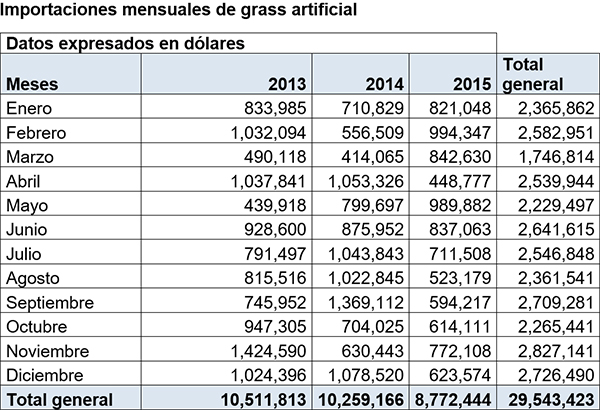
The dollar amount of artificial grass in 2013 was $ 10,511,812.71, in 2014 it was $ 10,259,166.44 and in 2015 it was $ 8,772,444.00 giving a total of $ 29,543,423.15 in the last three years.
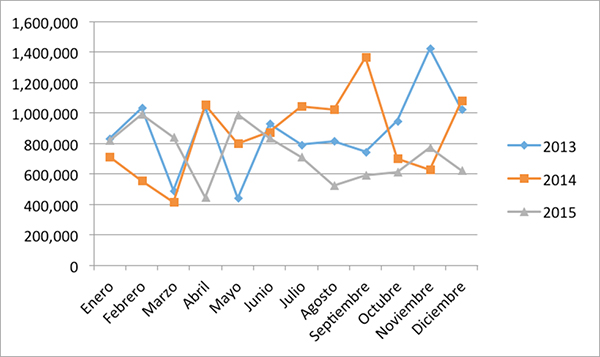
Regarding the import preference for months there are high peaks in September and November respectively. This may be due to the fact that many sports centers that have artificial grass, perform large maintenance actions in the field thinking about what will be the summer season, which is the most sporting activity.
The main imports during 2015 came from the following countries: China, with $ 8,114,645.41, the United States with $ 355,349.54, Mexico $ 239,347.21, the Netherlands $ 49,772.00, Turkey $ 10,650.00 and Chile $ 2,680.00, giving a total of $ 8,772 444.
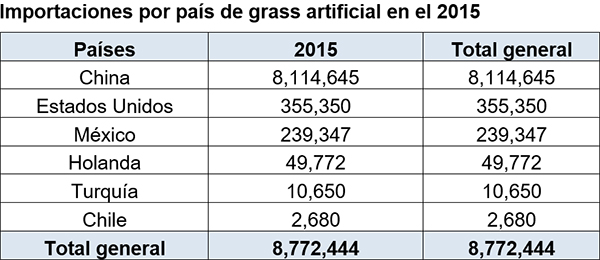
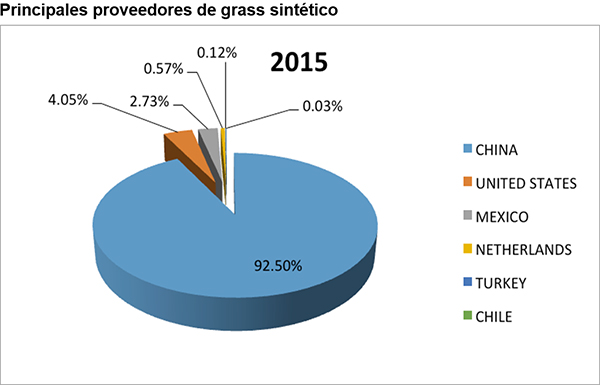
China is the main supplier of synthetic grass, covering 92.5%, followed by 4.05% of the United States.